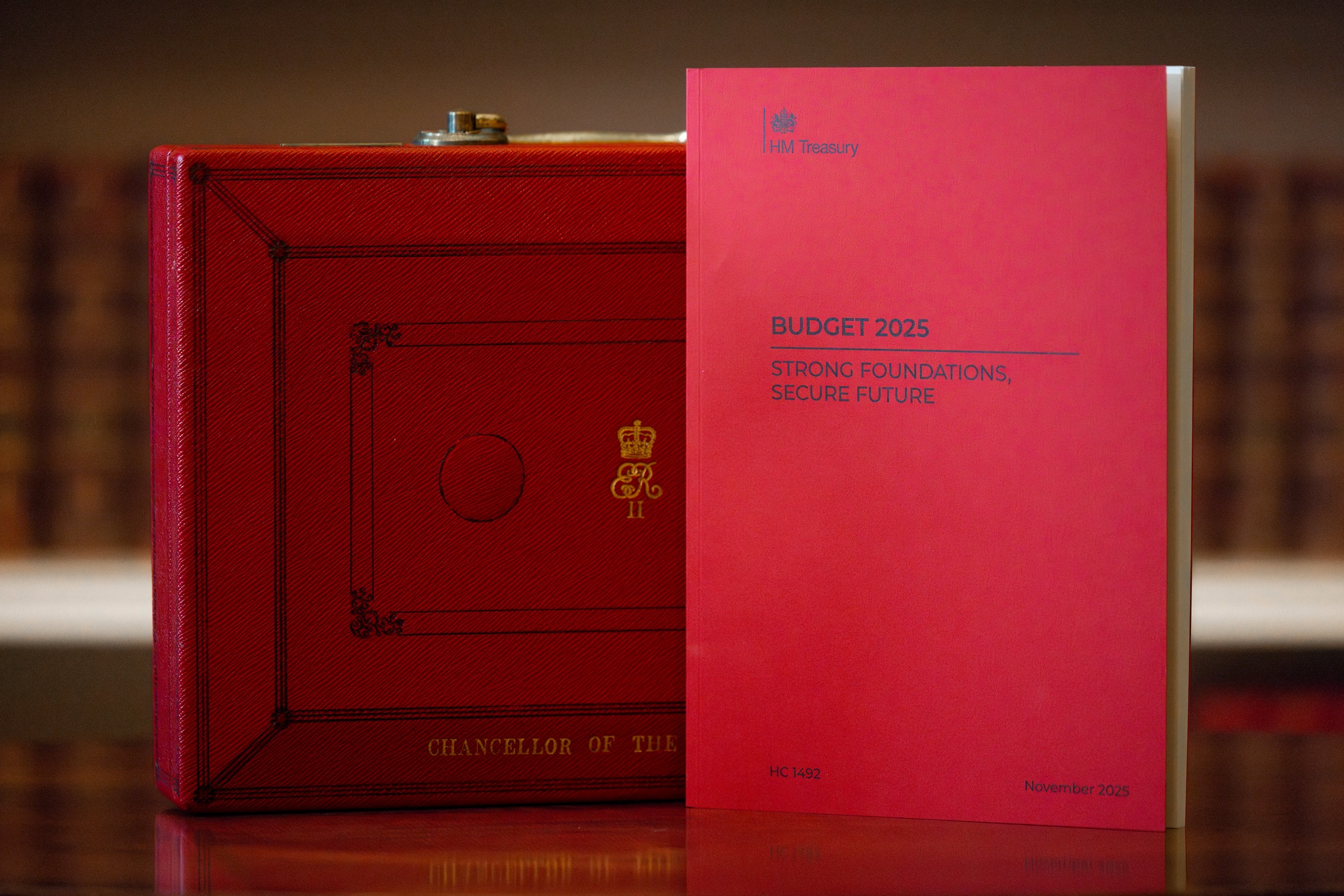HMRC delays payments of R&D tax relief claims

Research & development (R&D) tax credits are a form of tax relief first introduced by the UK government in 2000. R&D tax credits were established to encourage innovation in companies of all sizes, from SMEs (Small-Medium Enterprises) to larger enterprises, by rewarding eligible businesses with a tax credit in the form of a cash payment or a Corporation Tax reduction.
Research & development (R&D) tax credits are a form of tax relief first introduced by the UK government in 2000. R&D tax credits were established to encourage innovation in companies of all sizes, from SMEs (Small-Medium Enterprises) to larger enterprises, by rewarding eligible businesses with a tax credit in the form of a cash payment or a Corporation Tax reduction.
Where companies use science or technology to attempt to resolve issues and overcome limitations, HMRC offers two types of R&D tax relief incentives to support development: the SME Scheme and the R&D Expenditure Scheme.
R&D tax credits have been widely regarded as a valuable and generous incentive ever since they were introduced. Recently, however, there have been some delays in benefits being paid which means companies are having to wait longer for their credit. Delays can be common; HMRC experiences the same seasonal workload fluctuations as many other organisations. But why is this recent delay so significant? We go into more detail below.
Why is there a delay in R&D tax claims?
One reason for the current delay in R&D tax claim processing is that in the 2022 Spring Statement, the UK Government announced that they were tightening the criteria for R&D tax credits. The updates and changes to the incentive are designed to focus on UK-based innovation and to crack down on fraudulent claims.
As part of this renewed effort to make sure R&D tax credits are being properly distributed, HMRC are trying to tackle irregularities in claims by carrying out enhanced compliance checks, seemingly on claims below £50,000 and particularly within the software sector. This extra scrutiny has caused delays across the service with claimants having to wait longer to receive their R&D tax benefit.
On 17 May 2022, HMRC announced they were temporarily postponing payments of R&D credit claims. The payment suspension was part of HMRC’s effort to investigate the increase in unusual claims. While we welcome this well-intended scrutiny, one consequence has been a backlog of payments for legitimate claims. Alarmingly, it has been suggested that the involvement of organised crime is responsible for the rise in fraudulent claims, this goes some way to explaining the severity of HMRC’s response.
Another update followed on 14 June 2022: HMRC announced they were extending the timeline for processing claims from 28 days to 40 days.
We understand that staffing issues are also contributing to the delays. Although fraudulent claims were the original cause, the lack of staff and slow training are impacting HMRC’s ability to catch up and return to a more reliable timeline for processing claims.
What impact are R&D tax claim delays having on businesses?
Unfortunately, many businesses are starting to struggle with the R&D tax claim delays, especially those SMEs who run on a narrower budget and who may have come to depend on the credits to support the financial risks they’ve undertaken as part of their innovation. With the cost of materials, labour and power all increasing, delayed payments for R&D tax credit claims are also causing budgetary challenges.
A recent Financial Times article described the potential for HMRC’s recent “aggressive” stance on tax fraud risks stifling innovation. It seems likely that the ongoing delays and additional scrutiny to tackle fraud will be interpreted as a disruption and an inconvenience by many in the industry. There are serious concerns that the delays are affecting cash flow, and this can leave eligible businesses hamstrung when it comes to further investment in innovation and R&D in the future.
The delays are also creating a sense of disillusionment among many claimant companies. For many years, the R&D tax incentives have been a reliable recognition of a business’s investment in innovation, but the lack of transparency and delays in payments are likely to create a sense of mistrust about the incentives. More broadly, this could have an effect on UK innovation.
How delayed are the R&D tax claim payouts?
Due to the lack of transparency, it’s not 100% clear how delayed payments are. However, there still appear to be some claims from 2021 and early 2022 that have not been settled or approved. Although HMRC technically already work to a 40-day claim-processing timeline, the actual payment times and additional delays can be much longer.
Claim processing times always vary on a case-by-case basis; the nature of your business and the complexity of your claim can be determining factors. There is no way of foretelling exactly how long a claim will take to be approved by HMRC before it is submitted.
What was the pay-out timescale before the delay?
Before the delays, HMRC’s target turnaround time for R&D tax credit claims was 28 days. Officials have said that they intend to return to these timings once the delays caused by claim discrepancies have been resolved.
It’s important to note that many companies submit their tax claims to HMRC in September or December; there is therefore often a delay in processing claims around this time.
For more questions on claiming R&D tax credits, check out our FAQ page.
Will HMRC return to the previous pay-out timeline?
Yes, as announced in the July 2022 Research and Development Communication Forum, HMRC does intend to return to the 28-day timeline for processing claims once the delays have been rectified. At this stage, we do not have any indication as to when this will be – for now, HMRC is still communicating that taxpayers will experience delays.
How do I submit a legitimate R&D tax relief claim?
Businesses can submit their own R&D tax relief claim by calculating their own R&D expenditure on a Company Tax Return form. With the claim, it’s recommended that a business provide a brief summary of how they qualify and specific details on key qualifying projects, although this is not mandatory.
When it comes to applying for R&D tax credits, businesses can be faced with many challenges, particularly if they are new to applying and are unsure about the process. These challenges can be the same for both start-ups and established enterprises and can include:
- Genuine mistakes in the calculation of a claim
- Understanding key qualifying criteria and what is eligible for claims
- Not knowing how to maximize their claims
- Having insufficient evidence to support their claims
With such a demanding process and the number of potential challengers, making an R&D tax claim requires experience and knowledge of the field. That is why some businesses chose to work with an R&D tax adviser such as us. Our team of specialists include engineers, chartered tax advisers, and science and technology PhDs, who work to understand the complexities of your R&D to ensure you receive the maximum return on R&D investment. We also actively participate in HMRC’s R&D Communication Forum (RDCF) and stay at the forefront of industry advances so we are able to provide the latest insights to clients.
Learn how to calculate R&D tax credits successfully.
Is there a way I can speed up my R&D tax claim?
There is no formal way to speed up your R&D tax claim. The best way to get through the system with minimal delays is by making sure your business has a high-quality submission with a good amount of information and detail. Part of the delays are being caused by the number of enquiries, so ensure you can answer any questions and have the relevant information to back up your claim.
At Kene, we pride ourselves on the quality of claims we submit on behalf of our clients, as well as having an excellent record of clearing any queries that HMRC may have.
FAQs

Can we help your business?
Book a free consultation with our expert R&D funding advisors today. We specialise in helping innovative businesses like yours unlock millions in government funding, specifically allocated to fuel your innovation. Let us help your business access the support it deserves.








.svg)


